How will global warming on polar bears
 Bashny.Net
Bashny.Net
Polar bears will not survive global warming. It is to such a disappointing conclusion scientists have come. Active melting of Arctic ice is now represents a huge threat to these majestic animals. Under the cut, you can read an interesting and perhaps unknown to you earlier about the white bear. Where are the polar bears in Russia? This hoschnik constantly lives in the area from Franz Josef Land and Novaya Zemlya to Chukotka. On the floating ice sometimes reaching Kamchatka. Marked strays far inland (up to 500 km on the Yenisei River).
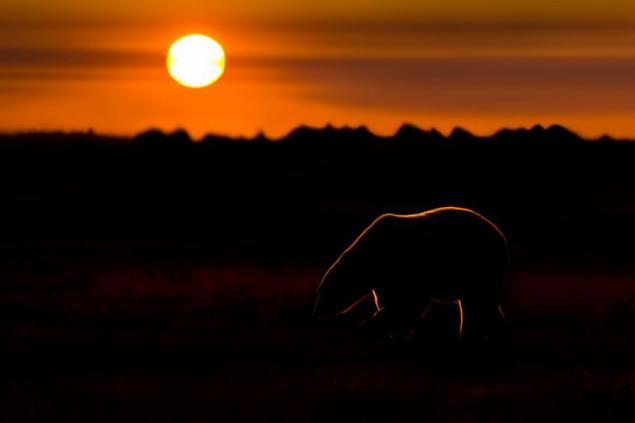
There are several versions warming. First - global warming, which is that the average temperature on Earth has risen at 0, 7 ° C since the beginning of the industrial revolution (from the second half of the XVIII century), and that "a large proportion of observed warming over the last 50 years is attributable to activities man ».

Opponents of the concept of anthropogenic global warming and the greenhouse effect, claiming that the observed increase in the average annual temperature - natural processes occurring on Earth, and they have nothing to do with human activity.

But anyway, a gradual increase in the average annual temperature is a threat to polar bears.
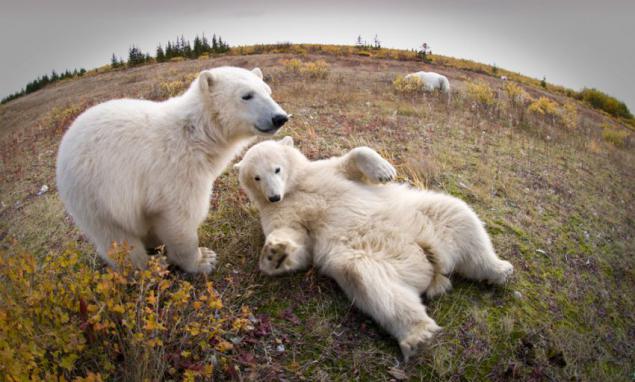
Polar Bear - a rare protected species listed in the Red Book of the Russian Federation. The total number of polar bears is now about 25 thousand individuals. Today, the existence of polar bears as a species threatened by industrial development in the Arctic, pollution and habitat destruction, poaching, and, of course, global warming.
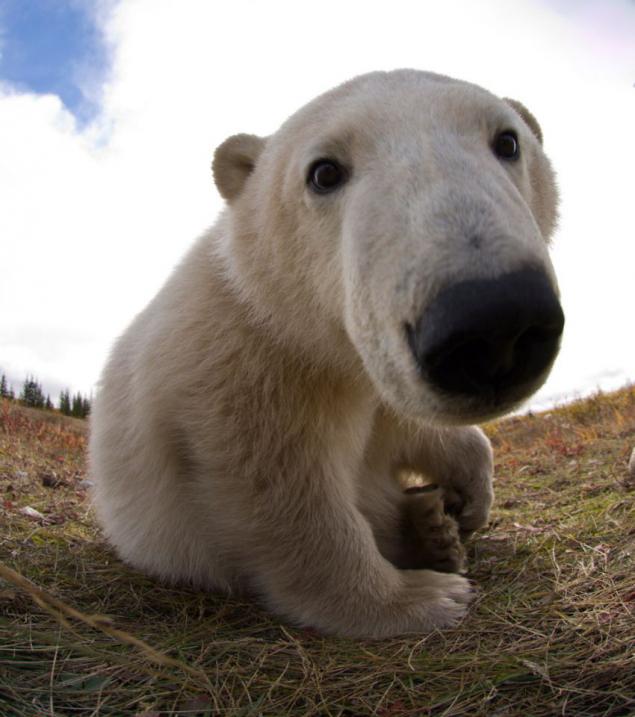
Animal-welfare advocates are sounding the alarm - on their data, the population of polar bears is reduced year by year. One of the main reasons cited climate change, because of which spring the ice away from the shore so fast and far that bears do not have time to swim on the edge of the ice. As a result, they are cut off from their main prey - seals and seals - and go find food in the garbage in the village, where they meet a man.
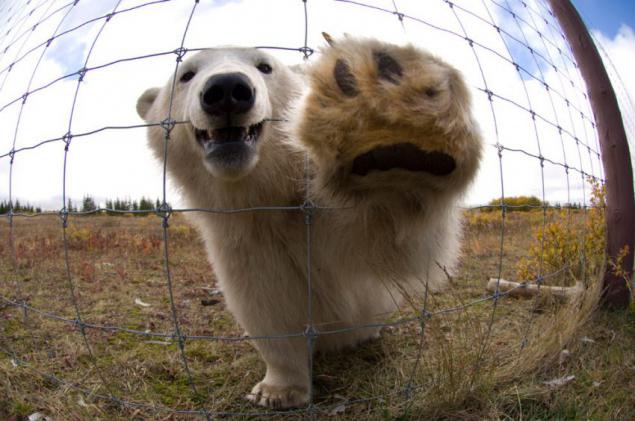
Experts say that by 2050 the population of polar bears in the Arctic could be reduced by two thirds. Today, greatly reduced the amount of ice drifting in the Arctic. Because of this, the habitat of polar bears is shrinking, he is forced to come ashore, where inevitably encounters with people.

Some time ago to protect the polar bear population, US authorities have allocated a special area for polar bears, which live on the disappearing ice in Alaska. The size of area - 484,000 square kilometers - twice the area of the UK and covers the northern and north-western coast of Alaska, including the polar ice.

Despite the fact that global warming continues to have a negative impact on the population of polar bears, scientists say that the inhabitants of the Arctic has been actively adapting to climate change.
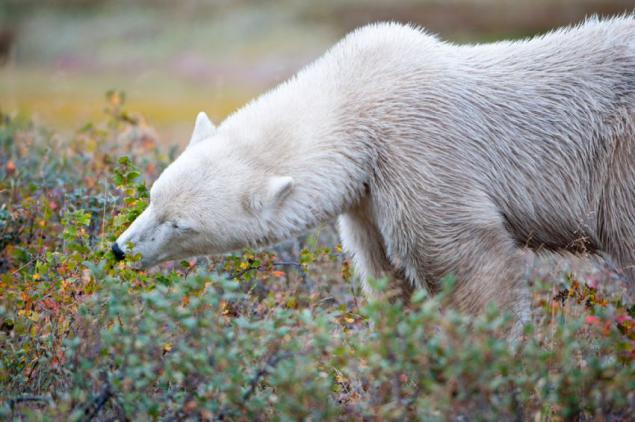
For example, Canadian scientists have seen a few cases where solitary bears went to the sea ice to the shore and wandered through the white goose colonies, carrying the eggs from the nests, and even climbed on the rocks in search of eggs and chicks guillemots. This is despite the fact that ordinary food of polar bears - the ringed seal.
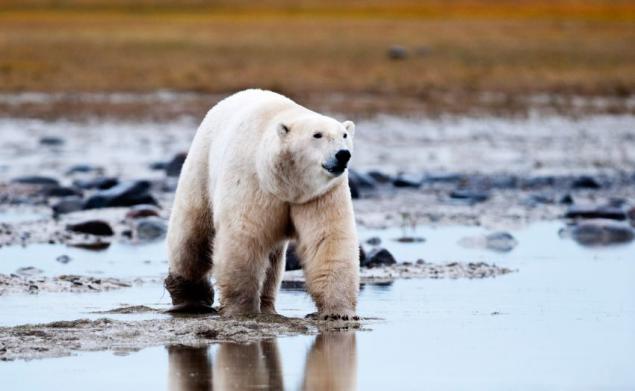
Polar Bear - the largest land predator wildlife. The body length of 1.6-3.3 m, weight males 400-500 kg (sometimes up to 750), females - up to 380 kg.
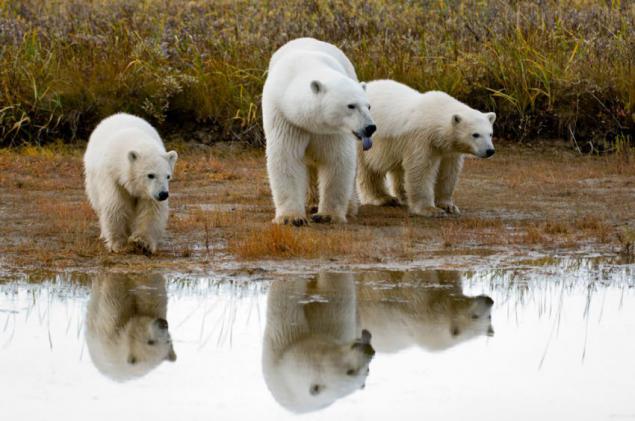
Bear excellent swims and dives, swims in the open sea for tens of kilometers. Fast moves on the ice. He leads a solitary lifestyle, but sometimes there are groups of 2-5 animals; some bears can gather around a big fall.
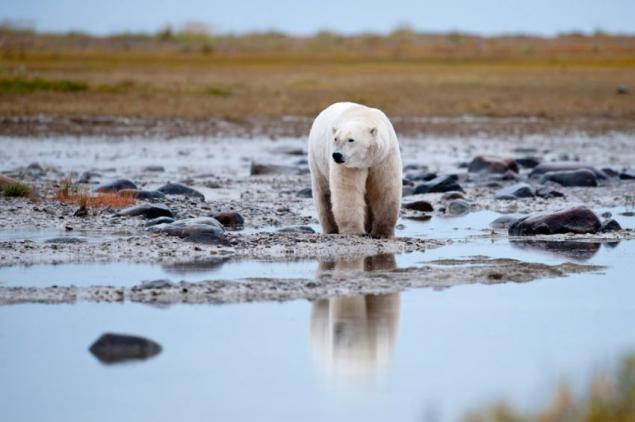
Polar bears prey on pinnipeds, mainly on ringed seals, bearded seals and harp seals. Landfall coastal islands and the mainland, young walrus hunt, eat and emissions Sea, carrion, fish, birds and their eggs, at least - rodents, berries, mosses and lichens.
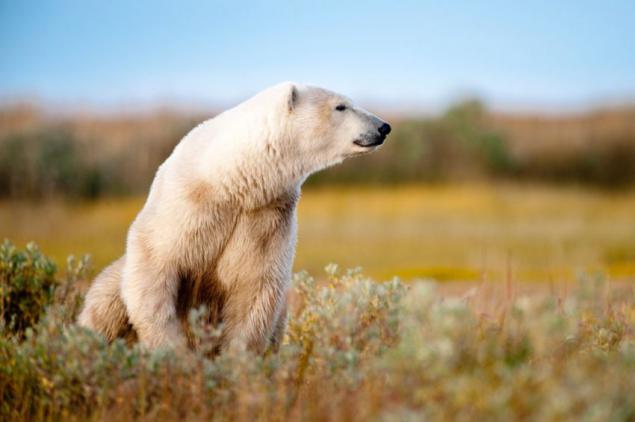
Pregnant females occur in the den that suit on the ground from October to March or April. In broods usually 1-3, usually 1-2 cubs. Before the age of two, they are the bear. The maximum life span of polar bears - 25-30 years, rarely more.
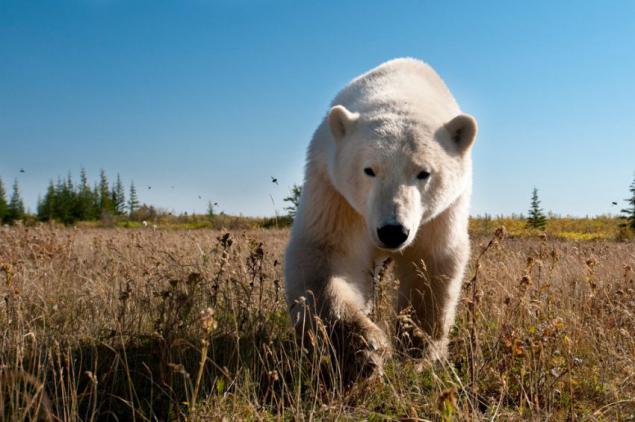
The southern boundary of the area of habitat coincides with the drifting ice edge. When the ice melts and the destruction of the bears moved to the northern border of the Arctic basin. Since the beginning of stable ice formation beasts begin to reverse migration to the south.

Source: loveopium.ru

There are several versions warming. First - global warming, which is that the average temperature on Earth has risen at 0, 7 ° C since the beginning of the industrial revolution (from the second half of the XVIII century), and that "a large proportion of observed warming over the last 50 years is attributable to activities man ».

Opponents of the concept of anthropogenic global warming and the greenhouse effect, claiming that the observed increase in the average annual temperature - natural processes occurring on Earth, and they have nothing to do with human activity.

But anyway, a gradual increase in the average annual temperature is a threat to polar bears.

Polar Bear - a rare protected species listed in the Red Book of the Russian Federation. The total number of polar bears is now about 25 thousand individuals. Today, the existence of polar bears as a species threatened by industrial development in the Arctic, pollution and habitat destruction, poaching, and, of course, global warming.

Animal-welfare advocates are sounding the alarm - on their data, the population of polar bears is reduced year by year. One of the main reasons cited climate change, because of which spring the ice away from the shore so fast and far that bears do not have time to swim on the edge of the ice. As a result, they are cut off from their main prey - seals and seals - and go find food in the garbage in the village, where they meet a man.

Experts say that by 2050 the population of polar bears in the Arctic could be reduced by two thirds. Today, greatly reduced the amount of ice drifting in the Arctic. Because of this, the habitat of polar bears is shrinking, he is forced to come ashore, where inevitably encounters with people.

Some time ago to protect the polar bear population, US authorities have allocated a special area for polar bears, which live on the disappearing ice in Alaska. The size of area - 484,000 square kilometers - twice the area of the UK and covers the northern and north-western coast of Alaska, including the polar ice.

Despite the fact that global warming continues to have a negative impact on the population of polar bears, scientists say that the inhabitants of the Arctic has been actively adapting to climate change.

For example, Canadian scientists have seen a few cases where solitary bears went to the sea ice to the shore and wandered through the white goose colonies, carrying the eggs from the nests, and even climbed on the rocks in search of eggs and chicks guillemots. This is despite the fact that ordinary food of polar bears - the ringed seal.

Polar Bear - the largest land predator wildlife. The body length of 1.6-3.3 m, weight males 400-500 kg (sometimes up to 750), females - up to 380 kg.

Bear excellent swims and dives, swims in the open sea for tens of kilometers. Fast moves on the ice. He leads a solitary lifestyle, but sometimes there are groups of 2-5 animals; some bears can gather around a big fall.

Polar bears prey on pinnipeds, mainly on ringed seals, bearded seals and harp seals. Landfall coastal islands and the mainland, young walrus hunt, eat and emissions Sea, carrion, fish, birds and their eggs, at least - rodents, berries, mosses and lichens.

Pregnant females occur in the den that suit on the ground from October to March or April. In broods usually 1-3, usually 1-2 cubs. Before the age of two, they are the bear. The maximum life span of polar bears - 25-30 years, rarely more.

The southern boundary of the area of habitat coincides with the drifting ice edge. When the ice melts and the destruction of the bears moved to the northern border of the Arctic basin. Since the beginning of stable ice formation beasts begin to reverse migration to the south.

Source: loveopium.ru
Tags
See also
15 postcards of how the Internet affects our lives
Chess soul. How to change EVERYTHING in your life?
The theory of warming "it is freezing"
How will AI impact your life in the next ten years
Scientists suggest that the flooding of parts of Europe has already begun
Man, spending his energy on something to collect as much fun in life and do not take responsibility for anyone (family ...) will not be able to find integrity within itself.
That's how things work in real life!
Life is priceless! As the dollar and eleven cents a childlike faith can save a little life.
John Garrison, 46-year-old Australian banker: how I wasted my life

















